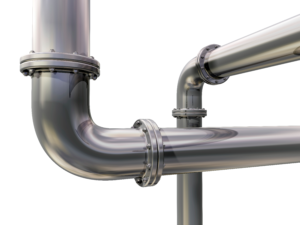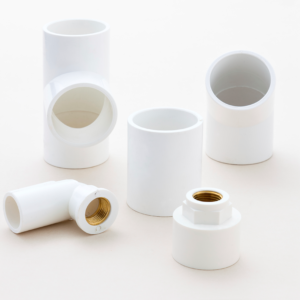Once again, it’s time to revisit one of the most common questions in the hydraulic and pneumatic systems solutions industry: what’s the difference between tubes and pipes? It’s a question which – at times – can trip industry novices and veterans – in addition to those not familiar with the industry.
Tubes vs Pipes: The Similarities
At first glance, pipes and tubes look very similar. They’re both:
- Cylindrical in shape
- Hollow
- Used throughout building structures
- Can be made from a variety of materials
As with many things, the difference is in the details. Tubes and pipes actually have very different functions, and it’s highly unlikely that a tube could do a pipe’s job, and vice-versa.
So, what exactly is a pipe? And what constitutes a tube? Let’s take a closer look:
Pipes
A pipe’s job is to transport fluids or gases:
- Water
- Oil
- Oxygen
- Hydrogen
- Steam
- Propane
Because of this, a pipe is measured by the inside diameter of its shape. This makes sense: the more room you have inside the pipe, the more material can be moved through it.
The inside diameter is the determining factor when selecting a pipe. In many cases, a contractor or engineer will choose a pipe which meets their needs when it comes to moving something through it.
Then, the outer thickness of the pipe can be modified to increase strength or its ability to withstand pressure.
Still unsure? Here are two simple ways to properly identify a pipe from a tube:
- A pipe is like a garden hose, except that it’s solid and can transport more things through it
- Oil companies usually lay down pipelines (not tube lines), so they can move oil through it
Tubes
Tubes – like pipes – are also cylindrical in shape. However that’s where the similarities end. Tubes are most commonly used in building structures.
Whereas pipes are measured by their inside diameter, tubes are measured by their outside diameter.
Tubes are usually employed in applications or places where room is tight and precise measurements and perfect fits are required, like:
- Hospitals
- Construction sites
- Load bearing areas
While tubes are structural components, that isn’t to say that things can’t be placed inside them. Yes, even fluids. However, items inside tubes are usually stationary, like:
- Electrical wiring
- Fibre-optic cables
Tube and pipe tools
Since tubes and pipes perform different functions, it only makes sense that the tools used to work on them are also unique.
- Tube Tools: These tools are used to primarily expand, cut or remove tubes altogether
- Pipe Tools: These tools can be used for beveling and sawing jobs
Contact us for all your tubing and piping needs
Now that you know the difference between tubes and pipes, and the difference between tube accessories and pipe accessories, it’s time to put that knowledge into action.
If you’re working on a pipe or a tube, we’ve got the right tools for you to get the job done with speed and accuracy.
Contact the team at Ultra Torq to learn more about our lineup of tube and pipe tools – and to arrange a live demonstration where you can for yourself how they perform.
Updated 2024-01-29.




